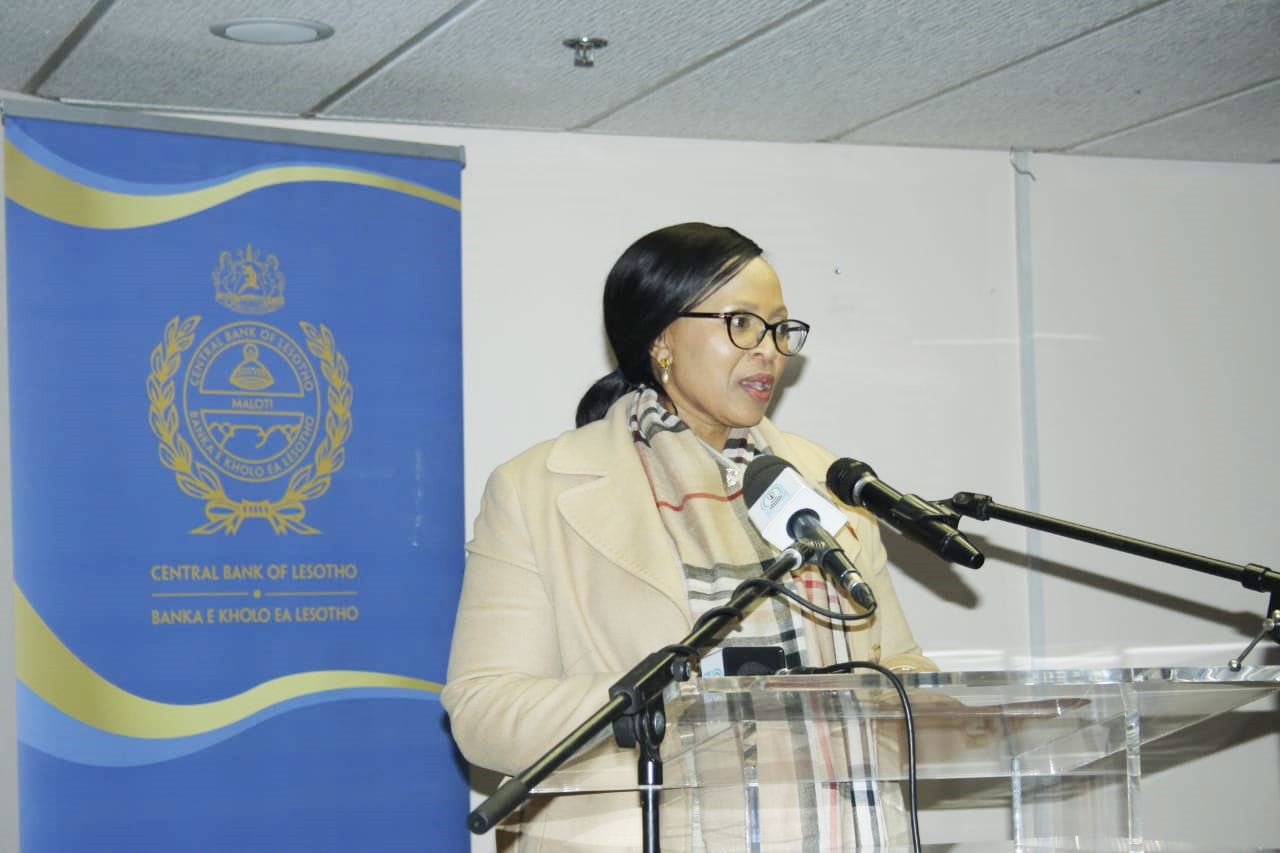International, regional and domestic economic developments as well as financial markets conditions took centre stage at this week’s meeting of the monetary policy committee (MPC) of the Central Bank of Lesotho (CBL), which was aimed at determining the monetary policy action that is appropriate for executing the CBL’s primary mandate of maintaining price stability.
Central Bank governor Retṧelisitsoe Matlanyane said the global economic activity was expected to stabilize in economic the fourth quarter of 2019. Following a broad-based slowdown in the previous quarter, growth in the fourth quarter was stimulated in part by accommodative monetary policy and expansionary fiscal policy in the first half of 2019 in some countries, including China and the US.
She added that there are signs that factors responsible for weak manufacturing and trade have abated. In contrast, labour markets in advanced economies remained buoyant, with unemployment rates in some cases at historically low levels.
She said however, downside risks to global economic outlook remain prominent and emanate mainly from trade and geo-political tensions, and other country-specific factors.
“Inflationary developments were mixed in advanced economies. In the US, the Euro Area and Japan, rate of inflation increased, while in the UK experienced a decrease. The monetary policy stance remained accommodative across advanced economies, with the US cutting its key policy rate and other countries keeping rates on hold in the fourth quarter of 2019.
“Economic activity in emerging market economies, including China and South Africa, has remained relatively low. China’s economic growth increased by 6 per cent in the fourth quarter of 2019. In south Africa, low business confidence continues to undermine growth prospects in the medium term, while risks to long-term growth emanate largely from structural challenges. The annual rate of headline inflation in South Africa, measured by changes in the consumer price index (CPI) for all urban areas, was recorded at 4 per cent in December 2019, up from 3.6 percent November 2019,” the governor indicated.
She further said domestically, economic growth remained weak. She said according to the CBL measure of economic activity, the economy grew by 0.1 percent in November, the same rate as recorded in October 2019.
“The sluggish economic performance was attributed to the generally weak supply side. In the labour market, employment by the LNDC-assisted firm declined further in the third quarter, consistent with lower demands for some of the large firms’ products in the overseas markets.
“The rate of inflation, measured by year-on-year percentage change in consumer price index (CPI), increased from 4.6 per cent in November 2019 to 4.8 per cent in December 2019. The major contributors to this position includes food and non-alcoholic beverages, clothing and footwear, housing, electricity, gas and other fuels.
“Money supply, as measured by M2, increased by 0.3 percent in the quarter ending December 2019, following an increase of 7.3 percent in the previous quarter. The increase was driven by net foreign assets despite a decline in net domestic claims. Private sector credit decreased by 1.9 percent t in December 2019, compared to an increase of 7.1 percent in September 2019.
“The external sector position worsened in the third quarter, on account of a widening current account deficit despite an improvement in the primary and secondary income accounts. Consequently, gross international reserves fell to 4.2 months of import cover from 4.5 months in the second quarter,” Matlanyane explained.
She further explained that government operations culminated in a balanced budget for the month of December 2019.









